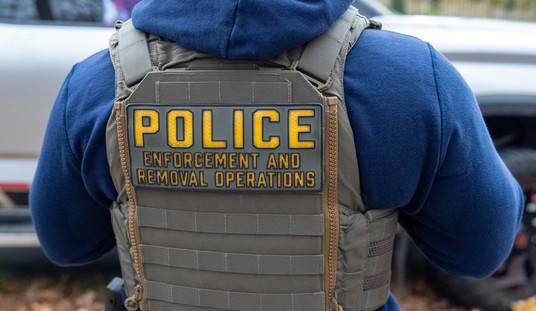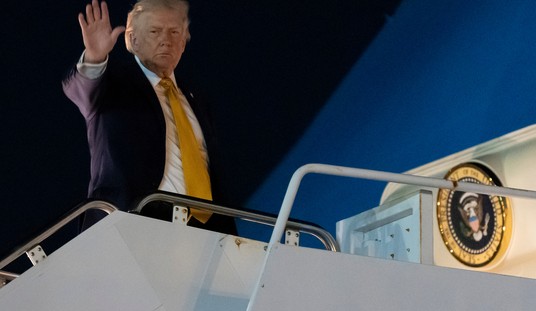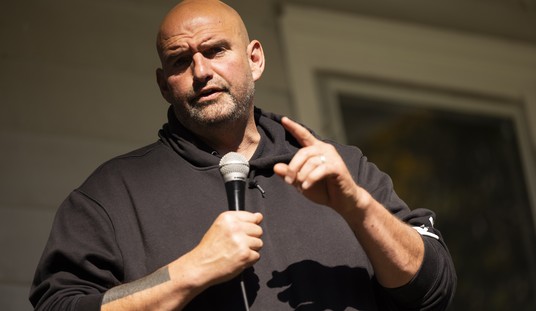
According to a report by The Military Times, President Trump was considering intervening in several Court Martial decisions with the intent of pardoning some military members and outright setting aside (overturning) the conviction of at least one other. From the article:
Defense Secretary Mark Esper has talked to President Donald Trump about the commander in chief’s plan to potentially pardon two soldiers and a sailor, an action CNN reported Wednesday is intended to serve as a Veterans Day gesture.
Navy Times reported Monday that Trump discussed restoring SEAL Edward “Eddie” Gallagher’s pay grade to chief petty officer, a week after a demotion to petty officer first class was allowed to stand.
The president also has mulled pardoning Army 1st LT. Clint Lorance and dropping the case against MAJ. Mathew GOlsteyn, Navy Times indicated.“I’m not going to comment on that,” Esper told reporters at the Pentagon on Wednesday. “As you know, I’m in the chain of command and I’m very conscious of my remarks. But I do have full confidence in the military justice system and we’ll let things play out as they play out.”
Further down, emphasis mine
Esper added that he met with Trump on Tuesday and had a “robust” conversation about the proposed pardons.
“Robust conversation?” Indeed. That could be taken a couple of ways. One way—Secretary Esper is strongly voicing his opinion regarding something President Trump wishes to do, and he disagrees with. The other—Secretary Esper is fronting the opinion of Military Senior Leadership, mostly put in place by President Obama and who are still advancing his policies.
I am unfamiliar with two of the three cases, but one, the case of Chief Petty Officer (CPO) Gallagher has lots of information in the public domain. CPO Gallagher is a Navy SEAL who was accused of murder of a prisoner, obstruction of justice and posing with the body of a dead enemy fighter. Egregious prosecutorial misconduct prior to and during the trial saw Gallagher acquitted of all charges except for posing for a picture with a dead enemy fighter.
President Trump has already intervened in Gallagher’s case, overturning part of the sentence by prohibiting the Chief of Naval Operations from reducing him in rank, thus saving a goodly portion of his retirement pay. President Trump’s intervention in order to rescue a warrior from rules of engagement run amok reminds me of an earlier era in politico-military relations, but with a far less happy outcome.
Gallagher’s case is reminiscent of what had become of our military towards the end of the Vietnam War. By the time we began actively negotiating an end to the conflict, America had become long disgusted with the loss of blood and treasure there. A long, bloody conflict, lack of support on the home front, coupled with an unpopular draft that took advantage of young men with the fewest prospects in life, took a terrible toll on our Armed Forces, especially the Army.
Morale and discipline in the Army had taken such a precipitous fall; they had become so bad, that Soldiers had on occasion decided that they would not subject themselves to the orders of certain officers. In some instances, they would roll a live grenade into said officers sleeping quarters, a technique known as “fragging.”
It’s a fairly easy task to compare the circumstances between Vietnam and Southwest Asia. In both cases and from the viewpoint of the Soldier in the ranks, we started out with lofty goals that we believed we could accomplish in a fairly short time period. In Vietnam, we hoped as Kennedy put it, “to make the world safe for Democracy.” In Southwest Asia, our task was twofold; get rid of Osama Bin Laden and his sponsors, the Taliban; and Remove Saddam Hussein from the board as a possible developer of weapons of mass destruction. Agree or disagree with any or all of those goals, they were the prevailing motivation at the beginning of each of these conflicts.
As each of these conflicts approached its second decade, the two situations became far less distinct. U.S. Military Deaths in Vietnam, over 50,000; Death count in Southwest Asia, although not as high, still pretty horrific at almost 7,000. In terms of National Treasure, the Overseas Contingency Operations (OCO) budget (used to keep/hide the cost of the current conflict out of the regular budget) has averaged over 116 Billion dollars each year, (until President Trump) while the parts of the military that ensure the readiness of the force have gone lacking. Training, Maintenance and Equipment Replacement have suffered.
This is eerily reminiscent of my first two years in the Army; I missed Vietnam by 2 years, but the momentum of that era still existed. I clearly remember waiting 4-6 months for vehicle repair parts. I also remember training dollars were so short, we had gone out on training exercises with half a tank of fuel and 20 rounds of blank ammo (when we could get it) per Soldier.
This brings me to the final comparison, troop morale and discipline. By the time the United States was looking for a way out of the jungles of Vietnam, troop morale was almost nonexistent. Volunteers were few, the majority of manpower requirements met by an unpopular and increasingly viewed as unfair draft. Draftees (the ones who didn’t hightail it for Canada) went to Vietnam with one and only one objective, come home alive and with no parts missing.
This was reflected in their attitude towards their officers. They would comply with orders that they knew were beyond their officer’s control, but woe betide any officer who went looking for trouble or who attempted to enforce any “chickenshit” regulation. Those officers would likely wake up dead, dead from an M47 Fragmentation Grenade rolled into their hooch.
Although fragging isn’t generally a tool of choice for malcontents in today’s Army (with one notable exception driven by Islamist beliefs), Soldiers at this point in the current conflict are close to the point that they were in Vietnam, albeit without a mandatory draft. Although, it could be argued that prior to Trump, the economic situation in these United States caused a sort of, “economic draft,” where military service afforded a way out of squalor.
Then there all the other distractions that take Soldier focus away from the mission and his team, directing it towards other politically correct ends, none of which serve to keep him alive or help accomplish the mission of destroying the enemy. Some of these are the integration of sexually disordered personnel and females into close-knit combat formations, which as any Infantryman will tell you, are a locker room environment, and necessarily so. Soldiers who push back on those decisions are punished.
Even leaders not guilty of some political transgression can be attacked by malcontents using an accusation of such to attack them in what amounts to a “judicial fragging.” They use the myriad of speech and conduct prohibitions regarding homosexuals, races, sexes, and rules of engagement to discover opportunities to use the might of the system to remove a boss that is essentially making them do their duty.
This brings us to the case of Chief Petty Officer Gallagher. Gallagher was the senior Petty Officer (Navy version of Noncommissioned Officer) of a SEAL unit that had some discipline issues. When Gallagher attempted to “get them back in the Navy,” they pushed back, using the Uniformed Code of Military Justice (UCMJ) to do so. This resulted in his being charged with murder, obstruction of justice and for posing with the picture of a dead enemy fighter.
During a long trial process in which the Navy prosecutors committed several acts of misconduct, some of which were criminal in nature, Gallagher was acquitted of all but one of the charges, posing with a dead enemy. Although that is a violation of the Law of Land Warfare, previous instances have been dealt with via various levels of reprimand.
The Navy, in an apparent attempt to save face, wanted to reduce CPO Gallagher to E-1, the lowest enlisted grade. The chief of Naval Operations decided to reduce him by only one grade, still significantly impacting his retirement. This is where President Trump stepped into the picture.
The judicial fragging that his subordinates attempted on CPO Gallagher is but a symptom of larger issues that President Trump has attempted to ameliorate during his administration. He has, from the start, been opposed to endless wars in foreign countries, wars that do little if anything to promote U.S. National Interest. He has been a tireless opponent of Rules of Engagement (ROE) that put our troops at risk. Finally, he is growing increasingly weary of a deeply embedded shadow government of unelected bureaucrats and senior Military Officers who appear to believe that their judgment outweighs that of a duly elected President.
This decision to overturn the sentence of CPO Gallagher is sending a message. That message? President Donald J. Trump is the Commander In Chief of the Armed forces of these United States. Despite the entreaties of Secretary Esper on behalf of senior officers “protecting the integrity of the UCMJ,” President Trump has overturned a sentence, but not the conviction.
This weekend, he is likely to overturn not only the sentence but also the conviction of Army Officer LT Clint Lorance who was found guilty in 2013 of second-degree murder for ordering his men to fire on three men who were advancing on a U.S. Military checkpoint in Afghanistan. Overturning a court Martial conviction under the UCMJ is a huge statement. He is looking at the senior leadership of Armed Forces and telling them that they got it completely wrong, while once again letting them know who The Boss is.
This series of pardons, commutations, and set-asides is a good start towards fixing what almost two decades of conflict with no defined endstate, has wrought with the morale and discipline of our Armed Forces. Obtaining funds for readiness and training, getting us out of conflicts we have no business in and removing political correctness from military operations and putting unelected bureaucrats in their proper place, will go a long way towards reducing or eliminating Judicial Fragging.
Mike Ford, a retired Infantry Officer, writes on Military, Foreign Affairs and occasionally dabbles in Political and Economic matters.
Follow him on Twitter: @MikeFor10394583
You can find his other Red State work here.














